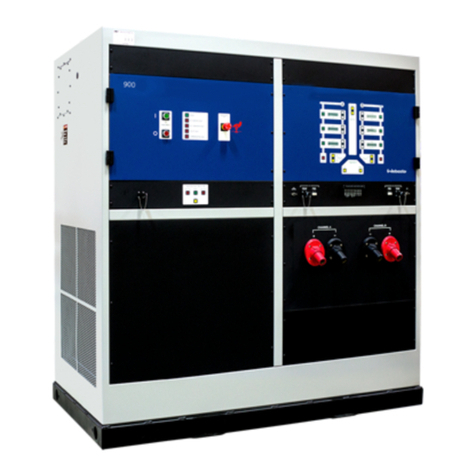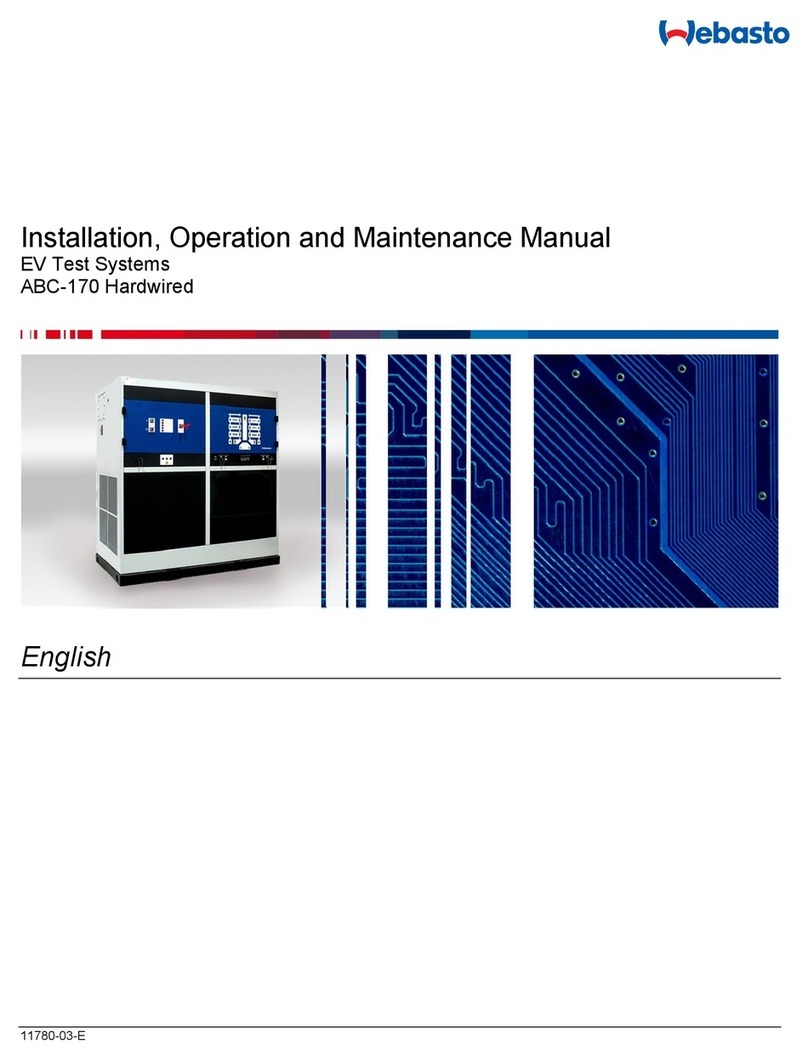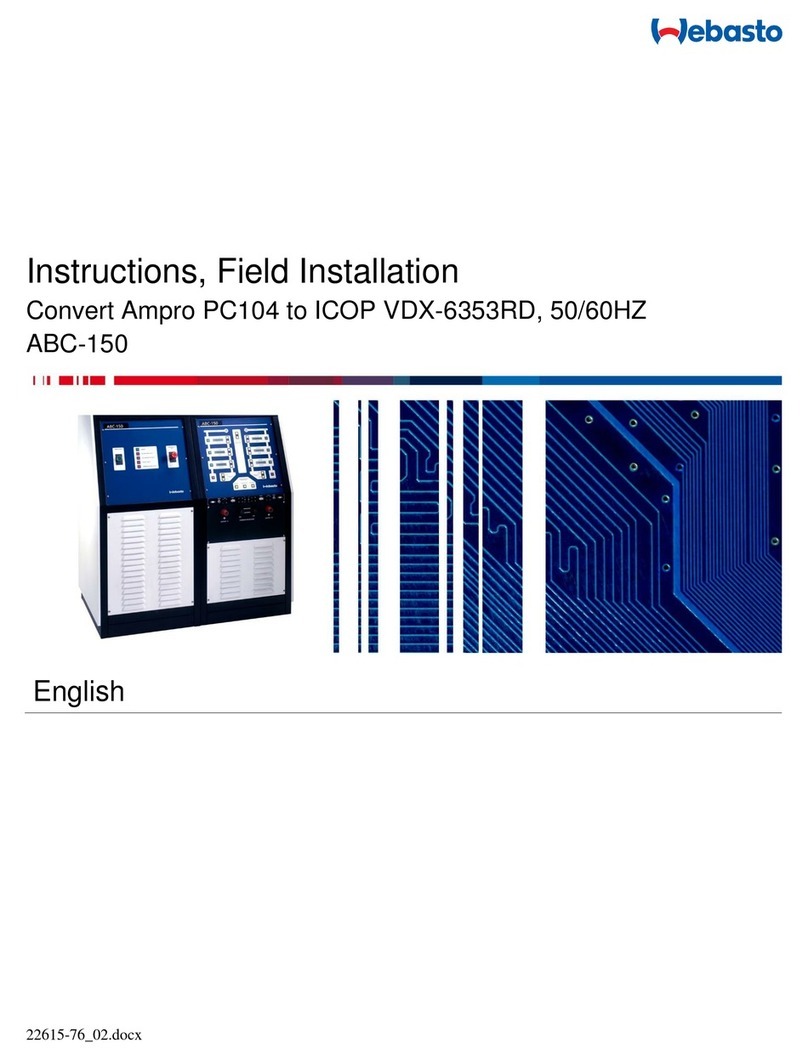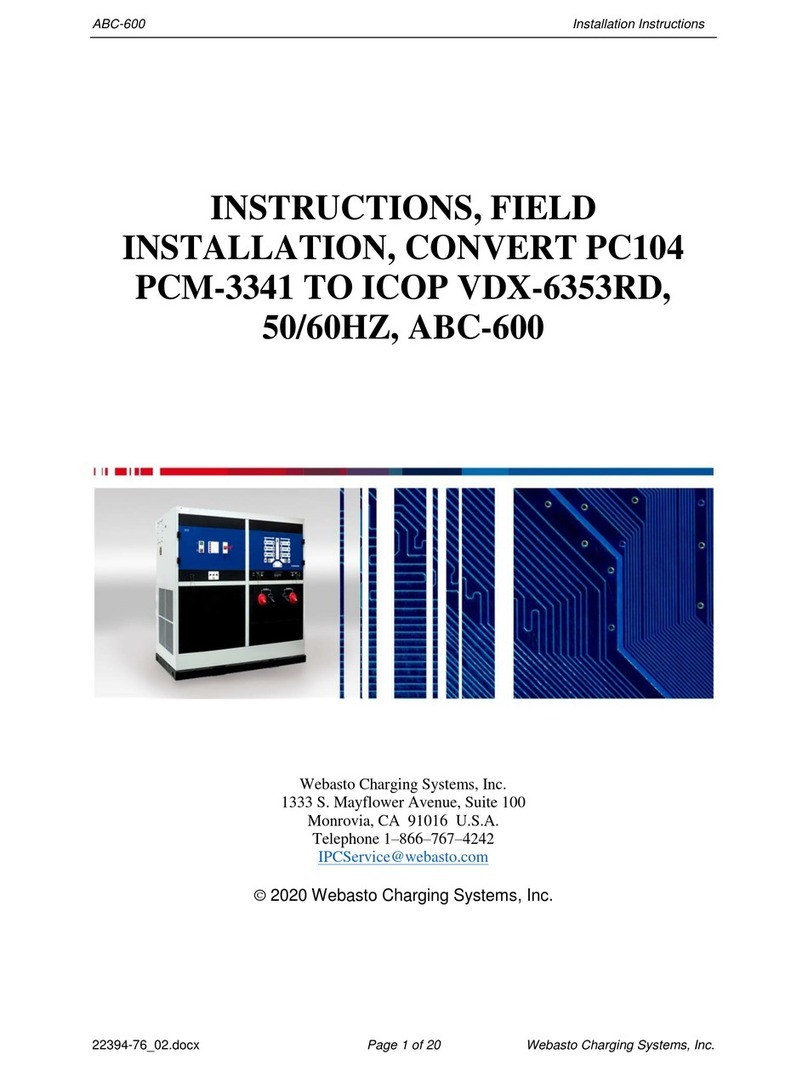ABC-170CE Installation, Operation, and Maintenance
29730-03-04 Page 3 of 61 Webasto Charging Systems, Inc.
Warranty
Webasto ABC-170CE Limited Warranty
Products manufactured by Webasto Inc. are warranted to the original user only to be
free of defects in material and workmanship for a period of 12 months from date of
installation, but not more than 18 months from date of manufacture. Webasto's liability
under this warranty shall be limited to repairing or replacing at Webasto's option, without
charge, F.O.B. Webasto's factory, any product of Webasto's manufacture. Webasto will
not be liable for any costs of removal, installation, transportation, or any other charge
which may arise in connection with a warranty claim. Webasto will not be liable for
damage or wear to products caused by abnormal operating conditions, accident, abuse,
misuse, unauthorized alteration or repair, or if the product was not installed in
accordance with Webasto's printed installation and operating instructions.
To obtain service under this warranty, the defective product must be returned to
Webasto with proof of purchase and installation date, failure date, and supporting
installation data. Any defective product to be returned to Webasto must be sent freight
prepaid; documentation supporting the warranty claim and/or a Return Material
Authorization must be included if so instructed.
WEBASTO WILL NOT BE LIABLE FOR ANY INCIDENTAL OR CONSEQUENTIAL
DAMAGES, LOSSES, OR EXPENSES ARISING FROM INSTALLATION, USE OR ANY
OTHER CAUSES. THERE ARE NO EXPRESS OR IMPLIED WARRANTIES,
INCLUDING MERCHANTABILITY OR FITNESS FOR A PARTICULAR PURPOSE,
WHICH EXTEND BEYOND THOSE WARRANTIES DESCRIBED OR REFERRED
TO ABOVE.
Some jurisdictions do not allow the exclusion or limitation of incidental or consequential
damages and some jurisdictions do not allow limitations on how long implied warranties
may last. Therefore, the above limitations or exclusions may not apply to you. This
warranty gives you specific legal rights and you may also have other rights which vary
from jurisdiction to jurisdiction.


































